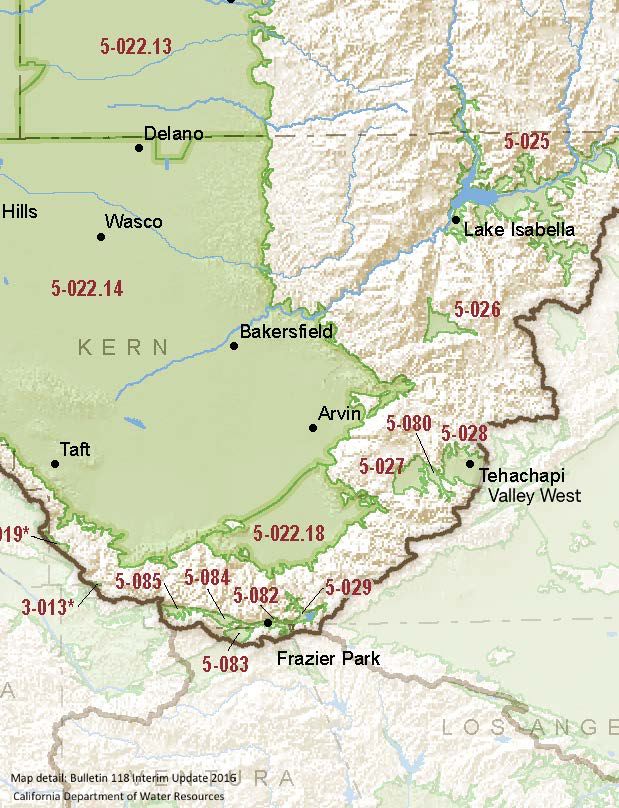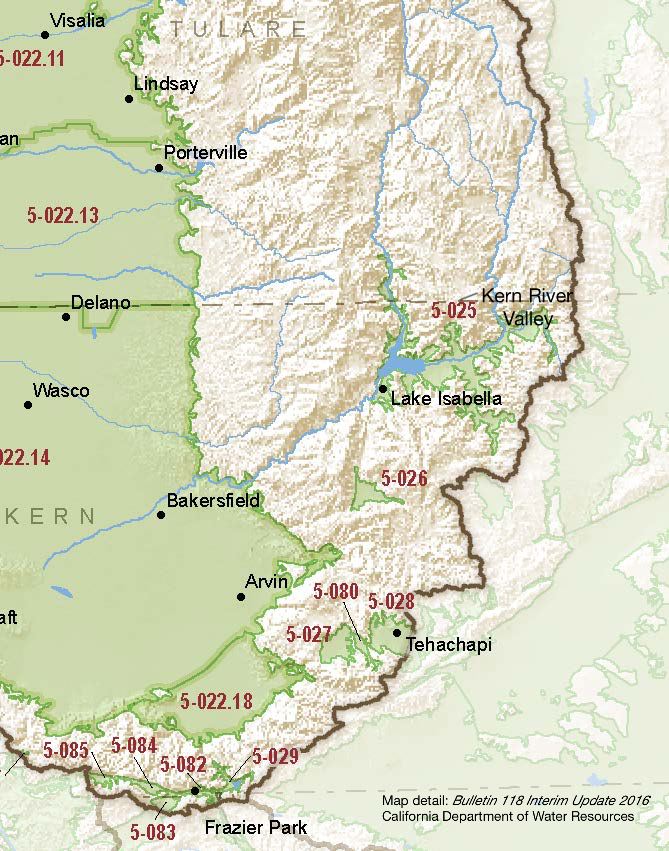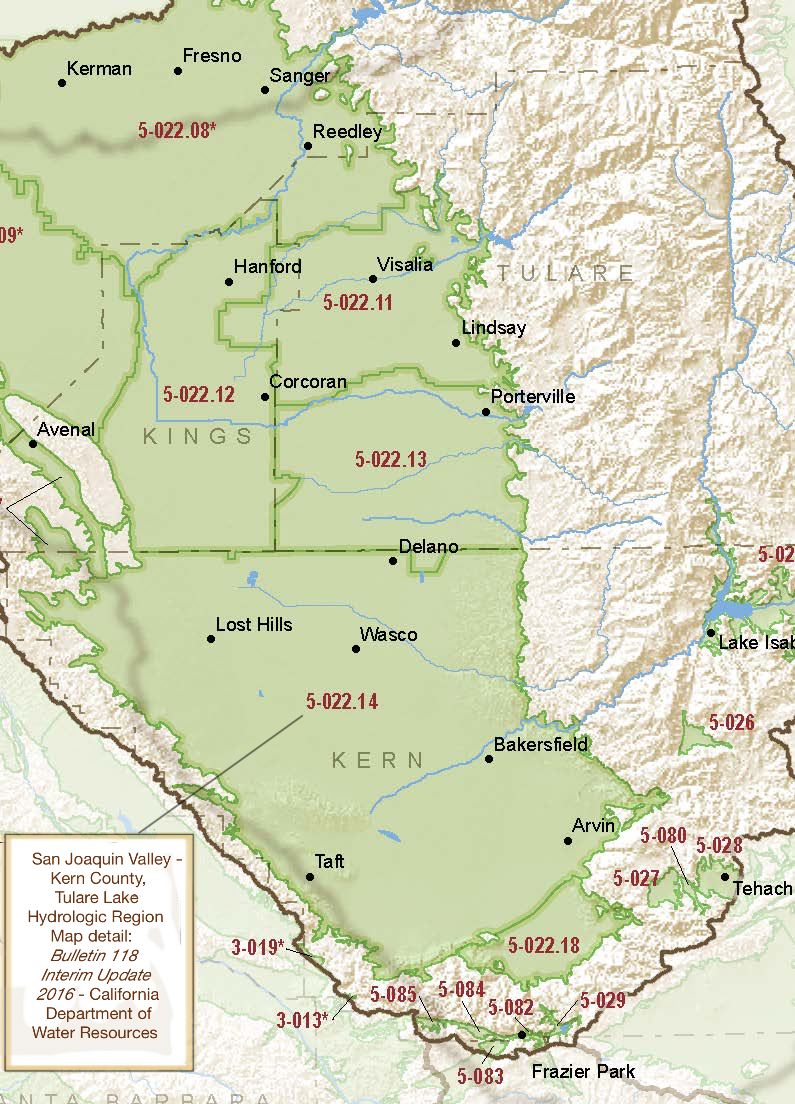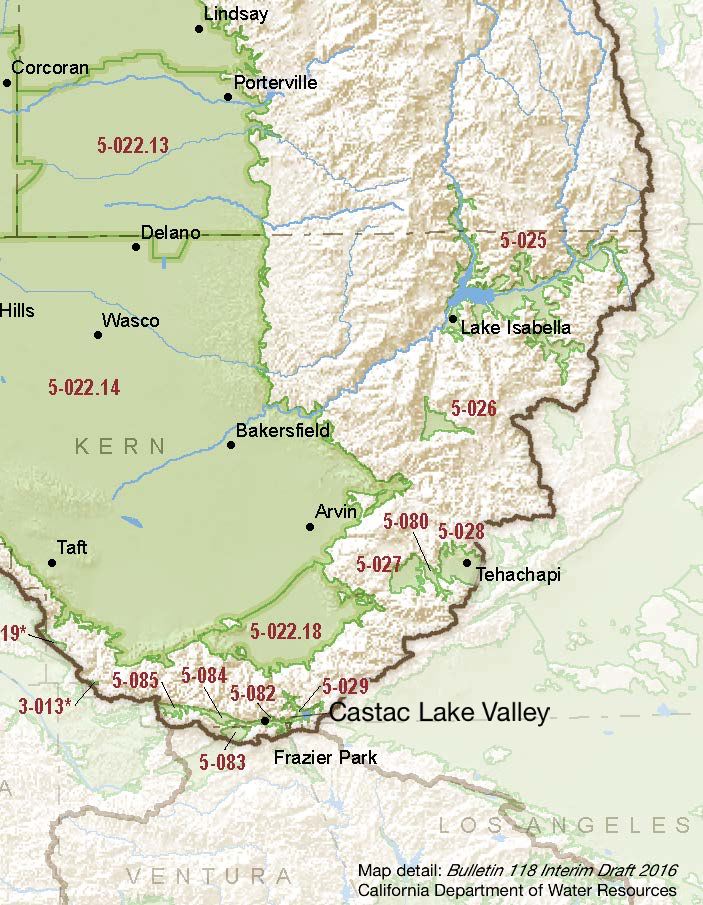 “Lower groundwater levels can prevent drainage of water and salts from a basin and increase aquifer salinity that eventually renders the groundwater unsuitable for use as drinking water or irrigation without expensive desalination. Pauloo et al. (2021) demonstrate this process for the Tulare Lake Basin (TLB) of California’s Central Valley.
“Lower groundwater levels can prevent drainage of water and salts from a basin and increase aquifer salinity that eventually renders the groundwater unsuitable for use as drinking water or irrigation without expensive desalination. Pauloo et al. (2021) demonstrate this process for the Tulare Lake Basin (TLB) of California’s Central Valley.
Even if groundwater pumping does not cause overdraft, it can cause hydrologic basin closure leading to progressive salinization that will not cease until the basin is opened by allowing natural or engineered exits for groundwater and dissolved salt. The process, “Anthropogenic Basin Closure and Groundwater Salinization (ABCSAL)”, is driven by human water management. … ”
Read more from the California Water Blog here: Groundwater Salinization in California’s Tulare Lake Basin, the ABCSAL model
“A local water district is developing a novel, market-based groundwater trading program that, if successful, could be expanded or copied to help Central Valley farmers cope with new state restrictions against over-pumping the region’s aquifers.
The Rosedale-Rio Bravo Water Storage District’s pilot program, set for testing later this summer or early fall, would allow certain landowners to buy or sell groundwater to or from another property owner within the district. … ”
Read more from Bakersfield.com here: Market-based program would encourage farmers to buy, sell local groundwater
“When it opened in 1951, the Friant-Kern Canal carried at least 4,000 cubic feet of water per second along its route from Millerton Lake, north of Fresno, to Bakersfield.
Then something unfortunate happened. A 25-mile stretch of land between Terra Bella and Pixley began to sink, and kept sinking, to the point that the canal’s gravity-powered water flow has slowed to about 1,700 cubic feet per second.
The subsidence, caused by over-pumping of groundwater during drought years, means 60 percent less drinking and irrigation water can be delivered to communities along the 152-mile conveyance. … ”
Read more from Bakersfield.com here: Engineers design repairs to sunken section of Friant-Kern Canal while politicians look for funding
From KGET:
“There is a lot of uncertainty down on the farm about impending and unprecedented restrictions that will be imposed on groundwater usage in California in 2020. On Kern County: In Depth, an update on the Sustainable Groundwater Management Act of 2014.”
Watch news feature from KGET here: Implementing groundwater regulations in Kern County
From California Agriculture:
“Sustaining the remarkable scale of agriculture in the San Joaquin Valley has required large imports of surface water and an average annual groundwater overdraft of 2 million acre-feet (Hanak et al. 2017). This level of water demand is unsustainable and is now forcing changes that will have profound social and economic consequences for San Joaquin Valley farmers and communities. Land will have to come out of agricultural production in some areas. Yet, the emerging changes also provide an important opportunity to strike a new balance between a vibrant agricultural economy and maintenance of natural ecosystems that provide a host of public benefits — if the land is retired and restored strategically.
Once characterized by widespread artesian wells, the San Joaquin Valley now averages groundwater depths of over 150 feet below the surface, exceeding 250 feet in many areas. Decades of groundwater withdrawals have led to the declining reliability and quality of groundwater (Hanak et al. 2015; Harter et al. 2012), widespread land subsidence exceeding 25 feet in some areas (CADWR 2014; Farr et al. 2017) and degradation of groundwater-dependent ecosystems (The Nature Conservancy 2014). … “
Continue reading from California Agriculture here: Groundwater sustainability in the San Joaquin Valley: Multiple benefits if agricultural lands are retired and restored strategically
 “Lower groundwater levels can prevent drainage of water and salts from a basin and increase aquifer salinity that eventually renders the groundwater unsuitable for use as drinking water or irrigation without expensive desalination. Pauloo et al. (2021) demonstrate this process for the Tulare Lake Basin (TLB) of California’s Central Valley.
“Lower groundwater levels can prevent drainage of water and salts from a basin and increase aquifer salinity that eventually renders the groundwater unsuitable for use as drinking water or irrigation without expensive desalination. Pauloo et al. (2021) demonstrate this process for the Tulare Lake Basin (TLB) of California’s Central Valley. 




